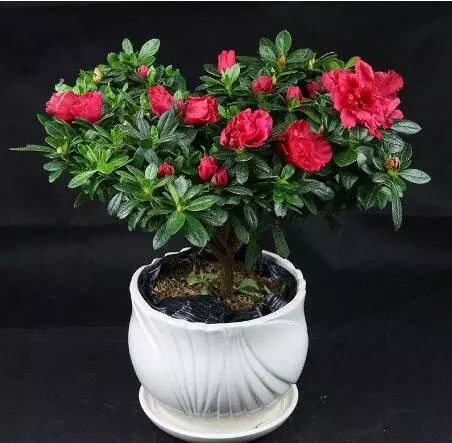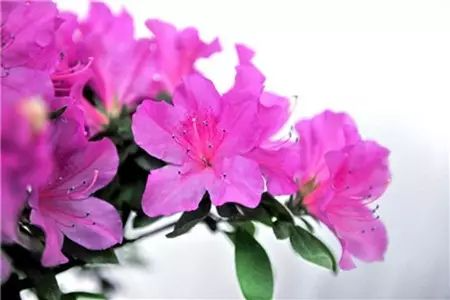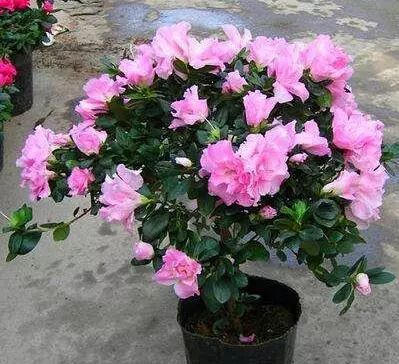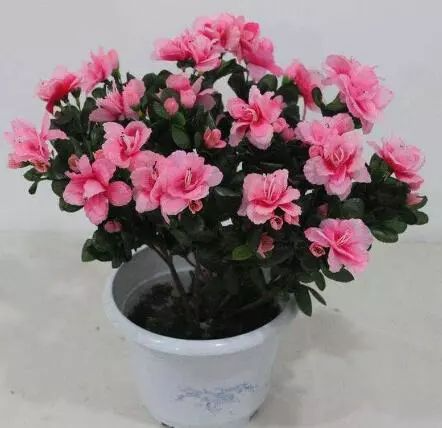6 common pests and diseases you need to know when growing potted azaleas

[Symptoms] Brown spot disease is a major disease of azalea.When the disease first occurs, small brown spots appear on the leaves, which gradually develop into large irregular spots. Many black or gray-brown dots appear on the spots, causing the affected leaves to turn yellow and fall off, affecting flowering in the current year and the development of flower buds in the next year.This disease often occurs during the rainy season when humidity is high.
【Prevention and Control】 Usually, pay attention to ventilation and light transmission of the plants, avoid excessive humidity, and apply organic fertilizer and nitrogen, phosphorus and potassium mixed fertilizer to enhance the plant's resistance to infection and growth ability. If diseased leaves are found, remove them in time and burn them in a centralized manner. In the early stage of the disease, spray 0.5% Bordeaux mixture or 0.4 Baume lime sulfur mixture, and add 4% flour to increase adhesion. Leaf spot and black spot can also be treated with the same method.

[Symptoms] Iron deficiency chlorosis often occurs in areas with alkaline soil. When the disease is mild, only the plant will turn green late. In severe cases, the leaf tissue may turn yellow and the edges of the leaves may become scorched. When the disease occurs, the symptoms are most obvious on the leaves at the top of the plant, which is generally caused by internal iron deficiency.
【Prevention and Control】 Change the nature of iron deficiency in the soil and reduce soil alkalinity. Apply more organic fertilizer to transform clay soil. For iron-deficient plants, spray 0.2-0.3% ferrous sulfate solution directly. You can also use chopsticks to poke a few holes about 15 cm deep in the soil around the plants, and slowly inject 1:30 ferrous sulfate solution to fill the holes to increase soil acidity and reduce alkalinity.

[Symptoms] The adult body of the armyworm is small and flat, about 4 mm long, black, and is the most serious pest to evergreen azaleas. It often sucks sap from the back of leaves, causing yellow-white spots on the damaged leaves, causing the leaves to fall off, weakening the tree, and affecting growth and flowering. Azaleas in greenhouses are very susceptible to this insect.
[Prevention and Control] Spray 1000 times diluted 90% trichlorfon original drug, 1500 times diluted 40% oxydemeton-methyl emulsifiable concentrate, or 1000-1500 times diluted 50% carbofuran emulsifiable concentrate for prevention and control.

[Symptoms] Aphids mainly harm the young branches and leaves of rhododendron. In mild cases, the leaves can lose their green color. In severe cases, the leaves can curl up, become hard and brittle, and cannot absorb nutrients, affecting flowering.
[Prevention and Control] Pay special attention to aphids during the winter. Spray 5-degree lime sulfur mixture on the plants once in winter to eliminate overwintering eggs, remove weeds near flowers and eliminate insect sources. During the aphid-damaging period, spray 40% dimethoate or oxydemeton-methyl with 1,200 times water to make a solution for continuous spraying. It will be effective after 3 to 4 times.

[Symptoms] The short-whiskered moth is one of the important pests of rhododendron. It often sucks sap near the main vein on the back of the leaves, causing many oily patches on the back of the leaves, and finally causing the leaves to fall off.
[Prevention and Control] Spray 0.5 degree Baume lime sulfur mixture and 500 times diluted 25% insecticide aqueous solution once in mid-to-late October and early spring in March.

[Symptoms] Red spider mites are tiny in size, but they can cause serious damage to azaleas. This type of pest is most likely to occur in azaleas grown in high-rise buildings.
【Prevention and Control】 Manual killing. Forinsecticide, you can spray 5-degree lime sulfur mixture, or you can crush walnut leaves, oleander leaves, and green bamboo shoots in equal parts, soak them in juice, dilute them with water and spray them. Spraying with 1000 times water-diluted dichlorvos is also a good way to kill them.